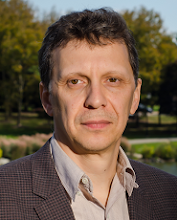"Crack of Doom" by Tiger Lillies. Какая жизнеутверждающая песня! What a wonderful, life-asserting song! Gotta love this British black humor :-)
Update (11/23/2013): " Now, nearly half a century after the war hero's suicide, Queen Elizabeth II has finally granted Turing a pardon." ( http://usat.ly/19bLZET ) Long overdue!!! With academic background in applied mathematics and computer science and years of experience in Information Technology it would be incredibly surprising if I didn't know of Alan Turing, or so I thought. Sure, I knew who he was and had a good idea of what he had contributed to the fields of mathematics, logic, cryptography, and of course computer science, which he basically founded; and things like Turing Machine, Turing Test, and Enigma Code-breaking have been widely popularized. I also knew that he died relatively young, but I am ashamed to admit that I didn't know anything about the circumstances surrounding his premature death. That is until I read the following in the book titled "The Information: A History, a Theory, a Flood" by James Gleick: "Turing's hom

Comments
Post a Comment